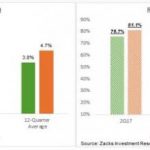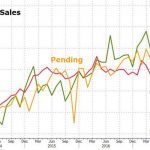When I began my investment career several years ago, closed-end funds (CEFs) were an even more esoteric asset class than they are today. But I think we can thank issuers like PIMCO, DoubleLine and Blackrock for bringing these fantastic investment vehicles into the broader investment spotlight. For individual investors, of which CEFs are largely marketed toward, analyzing these unique vehicles isn’t like a simple comparison between ETF indexes or subtle expense ratio differences. Instead, there is a myriad of factoids and information to digest before an investor can make an informed decision about a closed-end fund.
There is also the question of modern portfolio management techniques, which can sometimes be taxing for us to analyze as a firm, let alone an individual investor trying to decipher a fund’s underlying strategy. I want to highlight PIMCO because they have a very well-articulated mix of products, and nearly all of their taxable bond funds employ the use of advanced derivative strategies.
A quick trip to PIMCO’s website reveals simple things like a fund’s stated objective, manager, yield, leverage ratio, and expenses. These characteristics are all easy enough to decipher until you reach the portfolio’s composition. Although illustrated to the letter of the law, and simplified as much as humanly possible, there is a lot of information that most investors are not likely to unravel.
One example of this complexity can be found by examining the current portfolio composition of one of our holdings in the Flexible Growth and Income Report, the PIMCO Income Opportunity Fund (PKO). At first glance, it appears like a well-established mix of holdings in sectors such as emerging markets, non-agency mortgage backed securities, and global high yield bonds.
However, that really only illustrates a small portion of what is happening within the fund. Upon further investigation, investors will discover credit default, interest rate, and currency swaps. While swaps can be a tough subject to dive into, I want to attempt to clarify and simplify examples of basic interest rate swaps so that investors can more easily understand what they are investing in, and how modern portfolio management techniques can be implemented to control key risks.














Leave A Comment